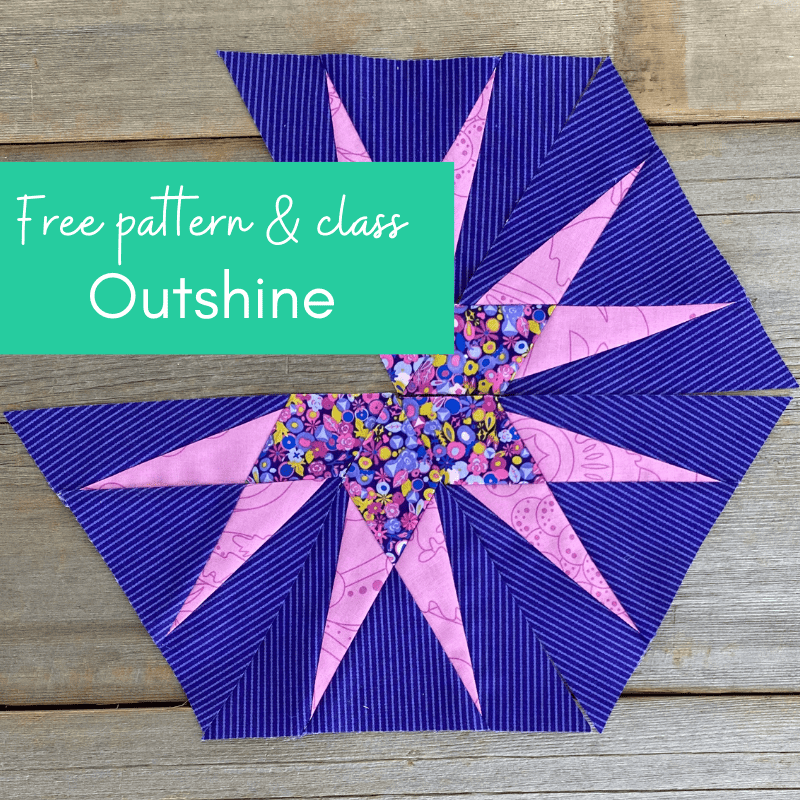Sewing with fabric selvages is fun way to make quilt blocks and DIY projects from the yardage in your fabric stash.
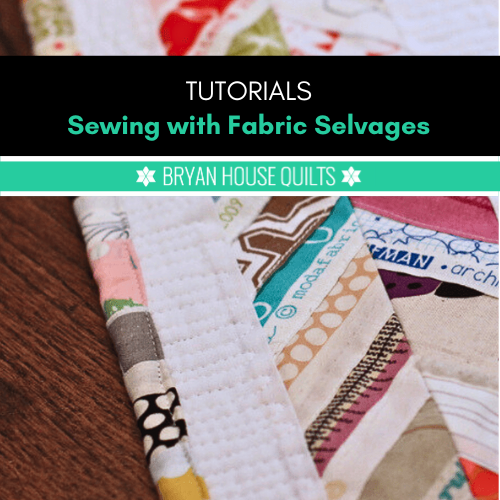
Have you bought a yard of fabric only for the selvage? Okay, yeeeeeees. (A Ruby Star Society fabric comes to mind) Collecting and creating with selvage edges adds color and texture to your quilty projects. Designers have added whimsical touches and personality to their selvage designs and we can’t resist them!
Even better, nothing goes to waste. Better than better? No fraying. None.
Noted: If you’re reading this in the UK or Canada, the accepted spelling in British English is selvedge. Both versions are correct based on where you live.
In this how-to “selvage/selvedge edges” post, I’ll share everything about sewing with fabric selvages from cutting to blocks to the finished selvage binding. Yes, even binding! Join me on the cutting edge for fun sewing. Wah-waaah.
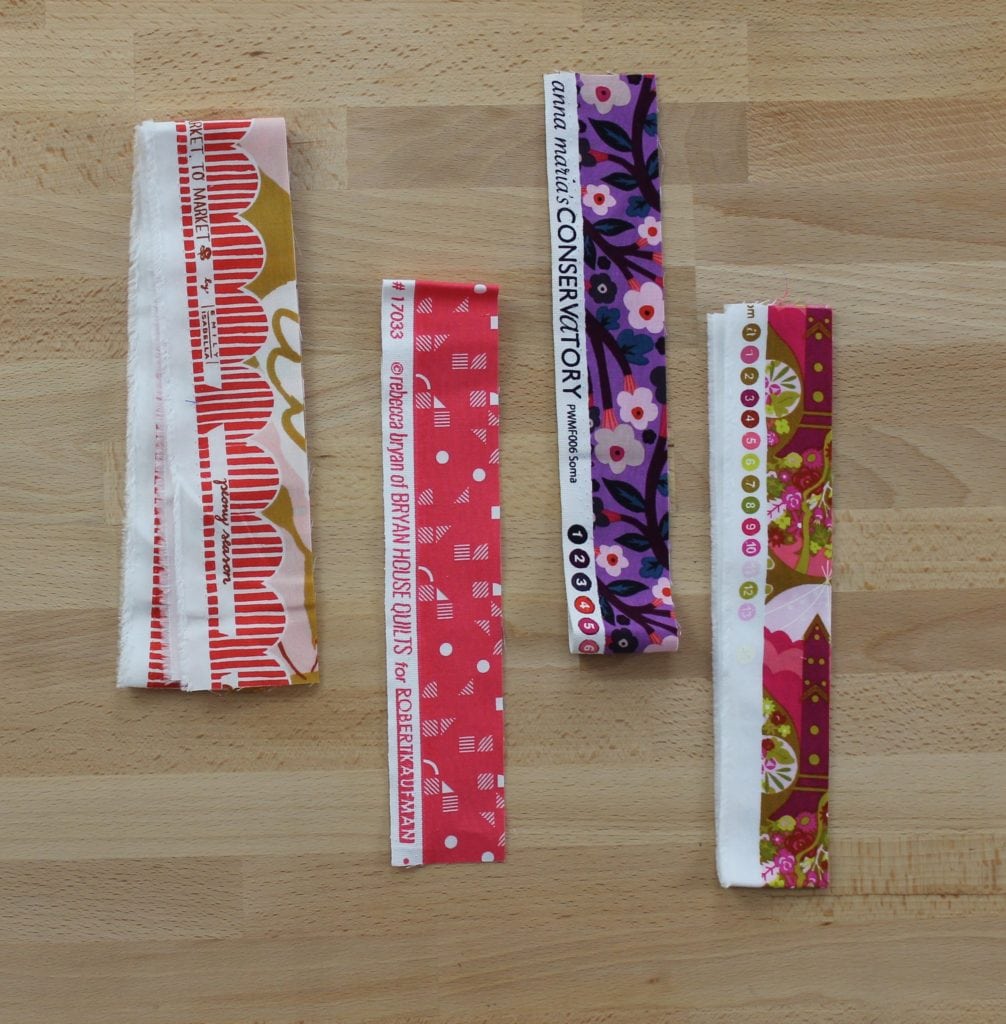
What is a selvage edge on fabric?
Fabric selvage is the tightly woven edge that runs lengthwise along the fabric – the straight grain (warp) direction. Selvages are stiffer with a tighter weave than the rest of the woven fabric. It has also been called a self edge. Fuzzy cut threads sometimes line the the selvages where the loops were cut during manufacturing.
The selvage edge helps determine the grain direction, bias and right side of fabrics. The printed edge indicates the right side. Premium quilt fabrics usually have a printed selvage – basic cotton fabric may not. You won’t see a printed edge on solids unless a solid color or blender was printed onto the fabric, not woven.

Why do fabrics have selvage edges?
Mainly, selvages keep the fabric grain straighter, and prevent unraveling and fraying during the printing process. Selvages are created during the weaving process when the fabric is manufactured.
It’s all about the weaving process. The weft threads weave and loop around at the edges of the fabric, which self-seals and becomes a denser woven selvage edge. Essentially, the raw edge is eliminated along the straight grain of woven fabrics. The rest of the threads are woven once horizontally and vertically, which makes it softer and less tightly woven.
A catchy way to remember which direction weft threads run is “weft to right”. In my brain, that means horizontal. Remember warp threads direction by imagining the vertical strings of a “warped harp”.
Those little holes along the edge of the fabric? Left by the machinery that holds the fabric while printing.
Decode printed fabric: Read the selvage edges
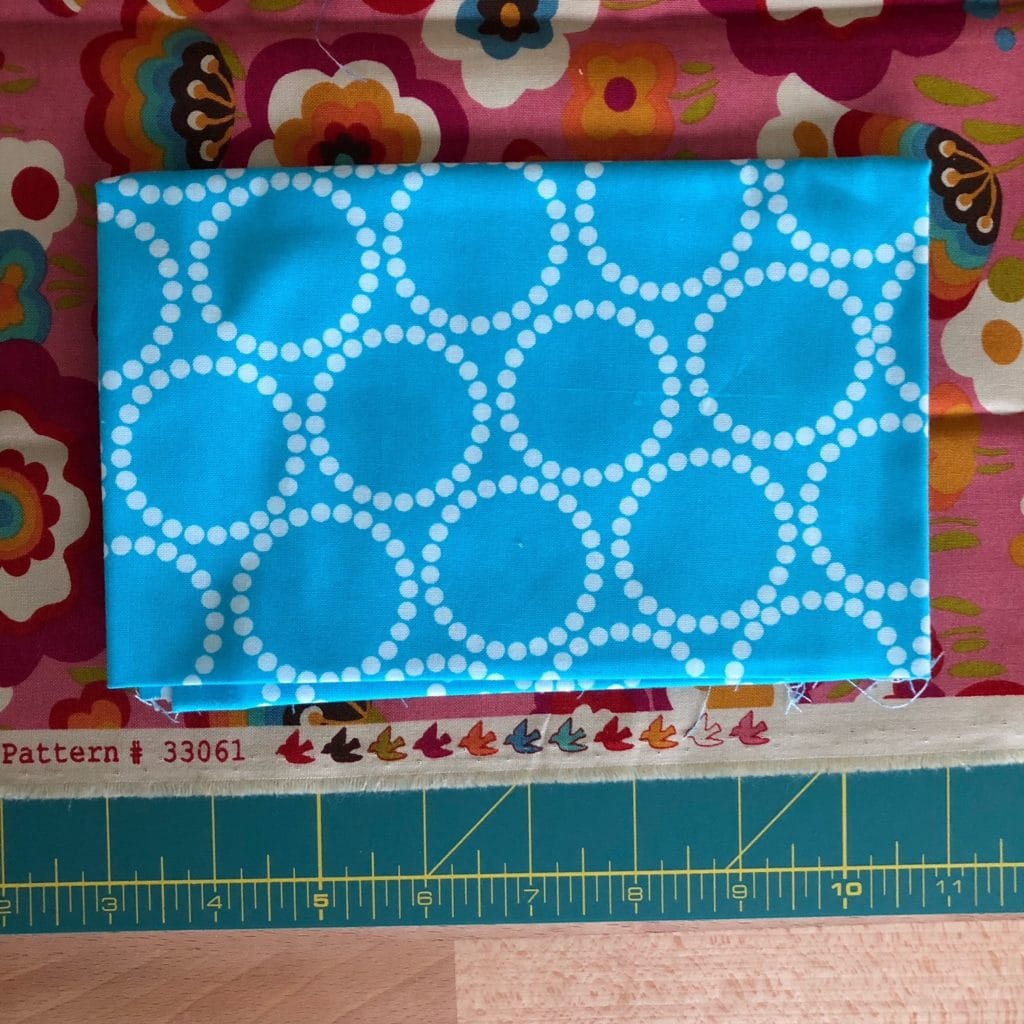
Most quilting fabric manufacturers print useful information on the fabric’s selvage – the brand, designer, collection and colors used.
What are the colored circles for? (er…colored doves?)
The little dots are like a painter’s palette. They show the number of colors printed on the fabric. A rule of thumb: more circles on a selvage create more color nuance, variety and depth. And very collectible.
Tutorials galore: Sewing with fabric selvages
Ready to start saving selvages?
Most selvages are a useful, bonus cut from your fabric – a self-finished edge with many uses. I love turning my selvage collection into fabric for blocks.
What else can you make with these colorful strips?
- Zipper pouches, wallets and tote bags
- Pillow cover
- Trim for a garment
- Binding
- Ribbons
- Wrapped cord bowl and more!
First, you’ll need to build your selvage collection from your fabrics.
Tutorial: Cutting Off Selvage Edges
In this YouTube video, I demo my favorite method to cut fabric for selvages.
My method gets the most color from selvages while saving enough usable fabric for a quilt pattern.
WATCH THE TUTORIAL
TUTORIAL TAKEAWAYS
- Cut selvages from fabrics that aren’t pre-washed or already cut. It’s just easier.
- Beware of narrow! If you cut narrow widths, you’ll cover (oh no!) the colorful edge of the fabric when you sew the selvages together. Narrow is less than a 1-inch wide selvage edge. Most selvages are ½ to ⅝ inches wide plus another inch of usable fabric. Be generous.
- When cutting from yardage, leave at least a 40” width of the rest of the fabric so it’s usable. Most quilts assume 40 – 42 inches of usable fabric width in the pattern.
- When cutting from a fat quarter, leave at least an 18” x 20” rectangle of usable fabric.
- Store these cuties in a large jar for display. Too pretty to hide.
- The length of the fabric matters. If you cut the edge from shorter pieces (less than 12 inches) they won’t be as versatile.
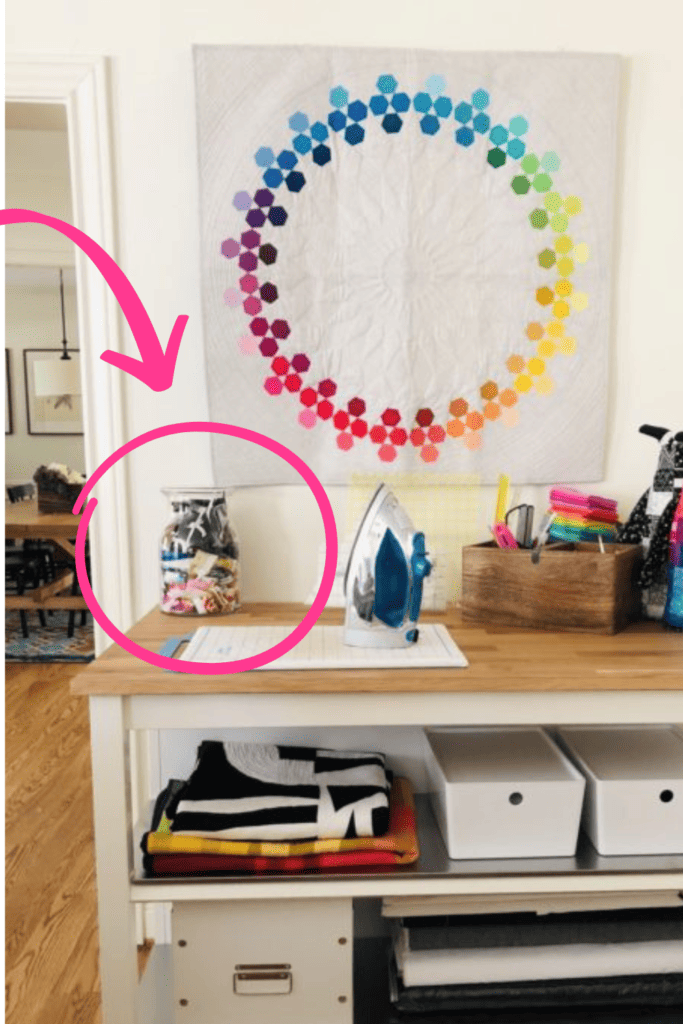
Tutorial: How to Make Selvage Fabric
WATCH THE TUTORIAL
Follow along in the video tutorial and read the key takeaways below. I’m going to show you how to use the fabric’s selvage to make usable material. The contrast between the colors, white edges and printed pattern creates fun material for all kinds of DIY projects.
KEY TAKEAWAYS
- I use muslin for the foundation because it’s thinner than quilting cotton, but use what you have on hand.
- Make a fat quarter size stripped piece – a common size used in patterns.
- Sewing the strips to a foundation makes it sturdier and easier to cut apart.
- Monofilament thread is clear so the stitches won’t show on different colored selvages.
I love the colorful result and the alternating stripe-y pattern!

How to Make Selvage Quilting Blocks
Did you know you can make entire quilts out of selvages?
I made Lucky Selvage Medallion with the selvage edge from favorites in my stash.

WATCH THE VIDEO TUTORIAL
Watch this quick video tutorial to learn how to sew selvage blocks – Selvage Criss Cross – also known as a lattice block.
The Criss Cross block design is an ideal way to show off fabric selvage. Plus, you can arrange these fun little blocks tons of ways – like X’s, O’s, and arrows.

KEY TAKEAWAYS
- Pressing creases into the blocks provides visual cues for placement.
- I use the creases throughout the piecing process to match and sew.
- Turn any ruler into a template! Use washi tape on a smaller ruler to make a trimming template.
- Consider buying a spinning cutting mat for faster trimming. I love mine!
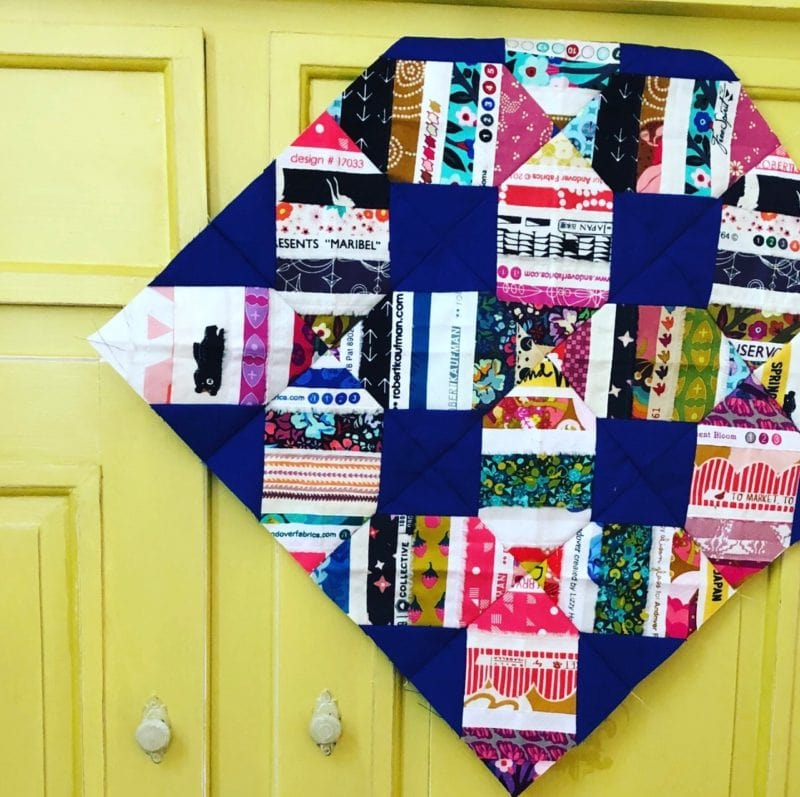
I plan to keep sewing Criss Cross blocks to make a large selvage quilt. Inspired? I plan to make make 60 more and I’ll need more selvages from…more fabric. I’m okay with that. – hehe-
TUTORIAL: How to Make Binding with FABRIC SELVAGE
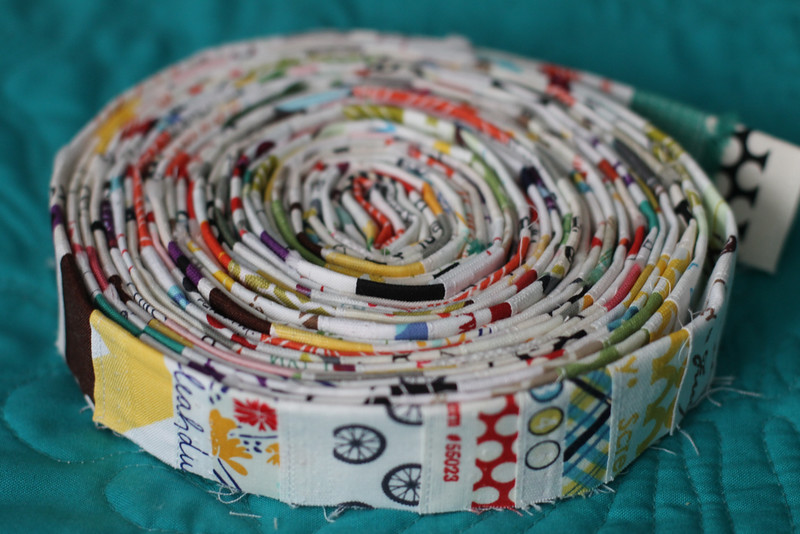
Binding from selvage fabric is my very favoritest way to use selvage fabric. Selvage edge binding works best for binding straight edges. (Bias tape or bias binding works better on curved edges). Even though the strips are densely woven, sewing through them is very doable.
Follow along in the video tutorial and read the key takeaways below.
TUTORIAL
KEY TAKEAWAYS
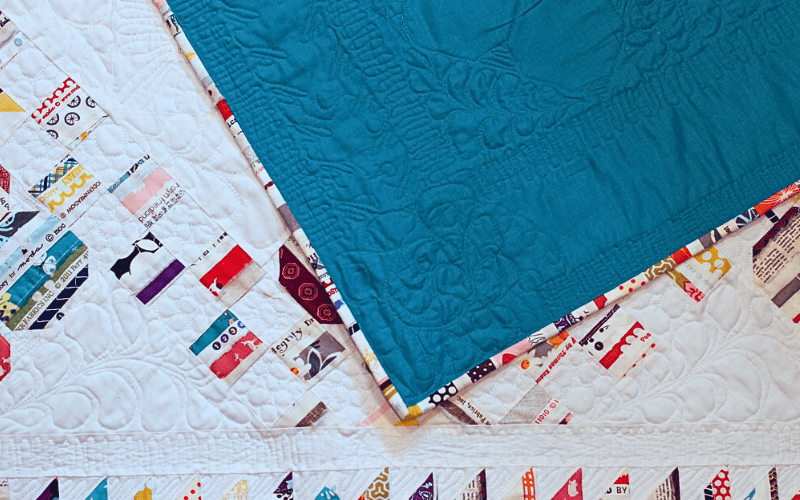
- Start with a fat quarter of selvage fabric and straighten the cut edge made with a ruler.
- Turn the fabric selvage so the strips run horizontally. Cut the vertical raw edge to straighten it along the ruler.
- Hide the unfinished edge under a selvage edge and topstitch to join the pieces.
- Fold the fabric over lengthwise just like bias and straight of grain binding. Even though its folded over, sewing through the layers is easy.
- Selvage binding isn’t like bias binding or bias tape – it won’t work well for neckline edges or armholes.
Read how to calculate how much binding you need here. You can use the same calculation for bias binding.
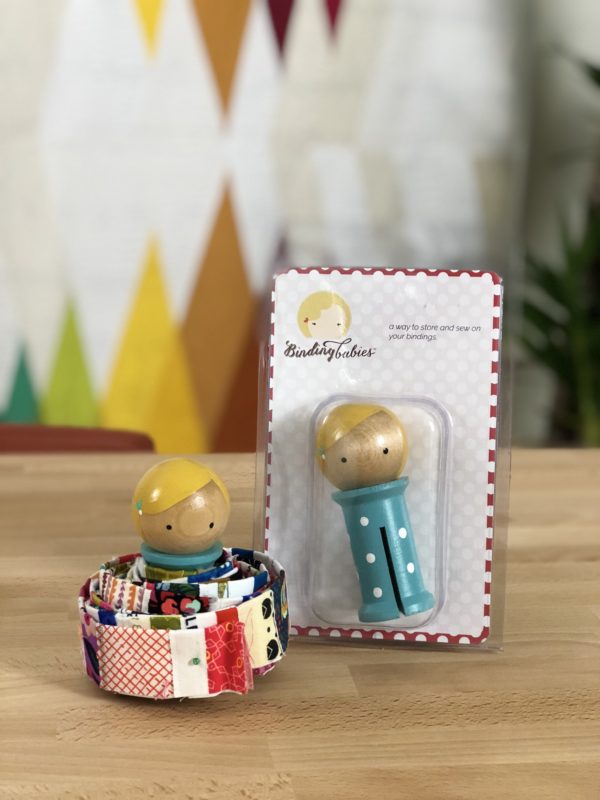
Wind it on a Binding Babies until your quilt is ready. Pretty darn cute!
I hope you had fun learning about sewing with fabric selvages!
I LOVE selvages, however, my greatest love is making modern triangles! Take a free class and get free pattern download here.
